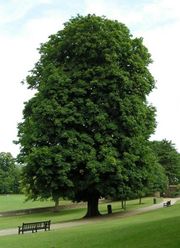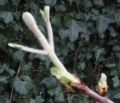Aesculus
Aesculus {{{latin_name}}}
|
Horsechestnut, Buckeye
| ||||||||||||||||||||||||||||||||||||||||
|---|---|---|---|---|---|---|---|---|---|---|---|---|---|---|---|---|---|---|---|---|---|---|---|---|---|---|---|---|---|---|---|---|---|---|---|---|---|---|---|---|---|

|
|
| |||||||||||||||||||||||||||||||||||||||
| |||||||||||||||||||||||||||||||||||||||||
The North American species are known as Buckeyes and the Eurasian species as Horse-chestnutswp. Some are also called "White Chestnut" or "Red Chestnut" (as in some of the Bach flower remedies. In Britain, they are sometimes called "Conker trees" because of their link with the game of Conkers ).wp
Cultivation
- Do you have cultivation info on this plant? Edit this section!
Propagation
- Do you have propagation info on this plant? Edit this section!
Pests and diseases
- Do you have pest and disease info on this plant? Edit this section!
Species
Source: Wikipedia
- Aesculus arguta: Texas buckeye
- Aesculus californica: California buckeye
- Aesculus × carnea: Red Horse Chestnut
- Aesculus chinensis: Chinese Horse Chestnut
- Aesculus chinensis var. wilsonii: Wilson's Horse Chestnut
- Aesculus flava (A. octandra): yellow buckeye
- Aesculus glabra: Ohio Buckeye
- Aesculus hippocastanum: Common Horse Chestnut
- Aesculus indica: Indian Horse Chestnut
- Aesculus neglecta: dwarf buckeye
- Aesculus parviflora: bottlebrush buckeye
- Aesculus parryi
- Aesculus pavia: red buckeye
- Aesculus sylvatica: painted Buckeye
- Aesculus turbinata: Japanese Horse Chestnut
- Aesculus wangii = Aesculus assamica
Gallery
If you have a photo of this plant, please upload it! Plus, there may be other photos available for you to add.
-
Flower of the Red Horse-chestnut (Aesculus x carnea)
-
Chinese Horse-chestnut (Aesculus chinensis) young leaves in spring ...
-
... and fully grown, in summer
-
California Buckeye (Aesculus californica) leaves
-
Aesculus hippocastanum bud opening in spring
-
Common Horse-chestnut tree in winter
-
Red Horse-chestnut (Aesculus x carnea)
-
Ohio Buckeye tree (Aesculus glabra)
References
External links
- w:Aesculus. Some of the material on this page may be from Wikipedia, under the Creative Commons license.
- Aesculus QR Code (Size 50, 100, 200, 500)







